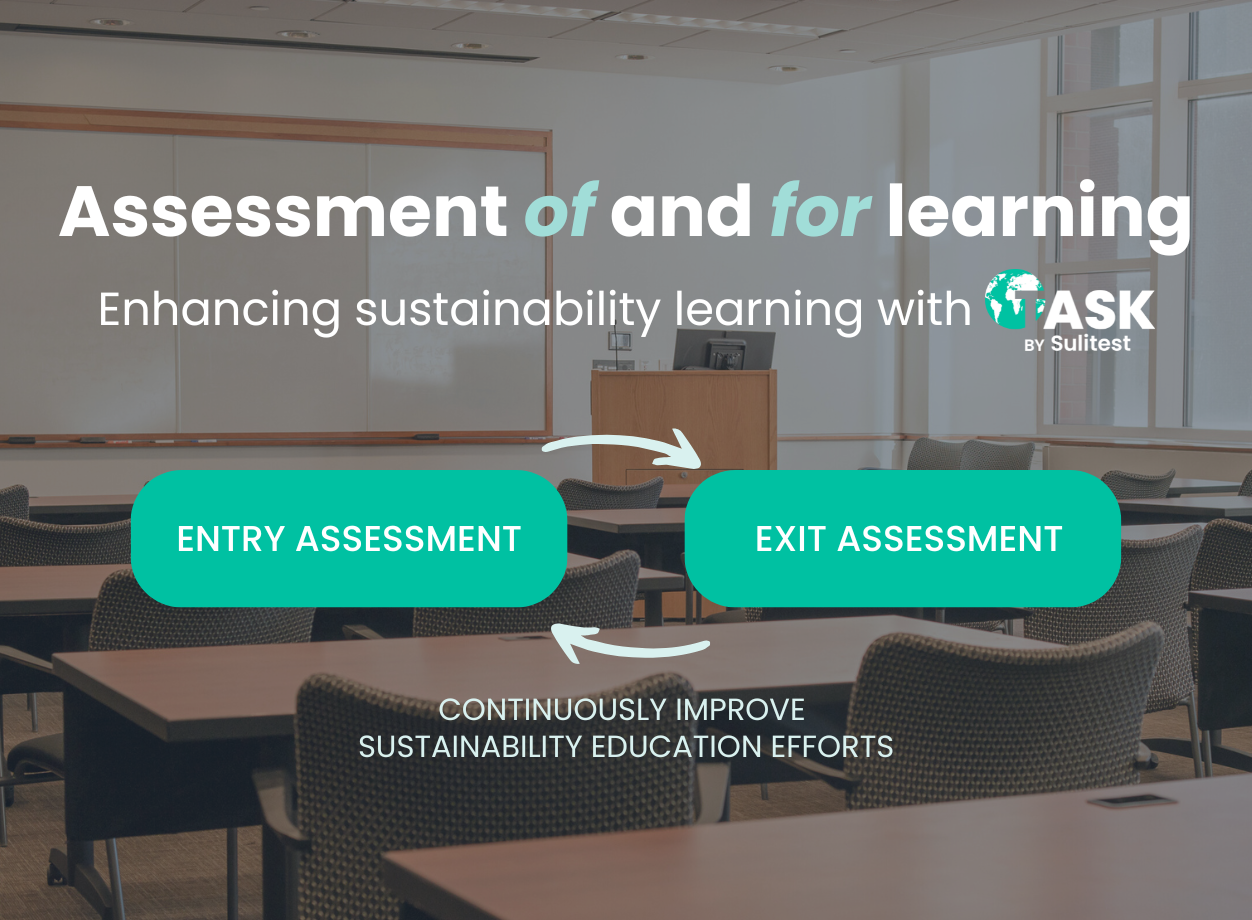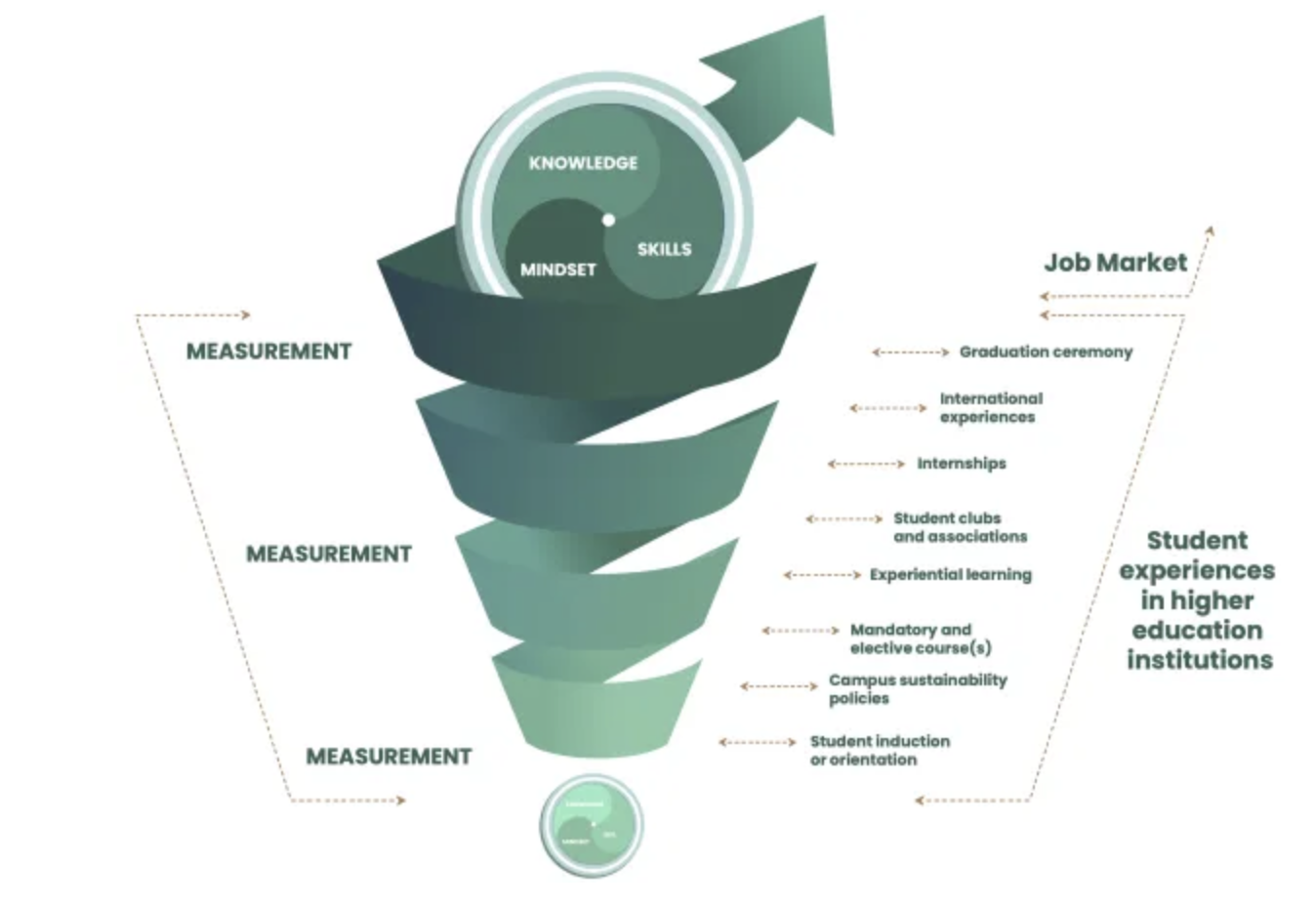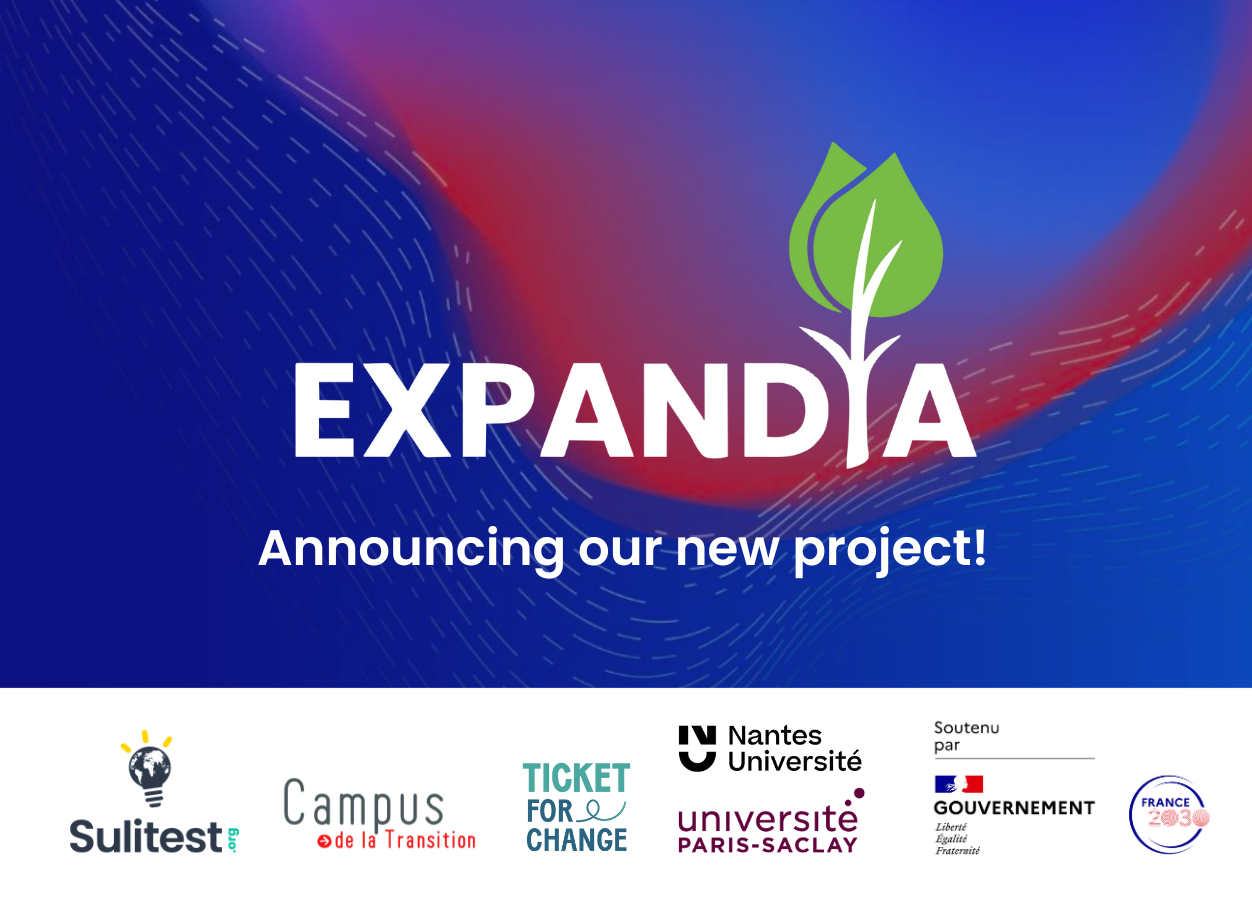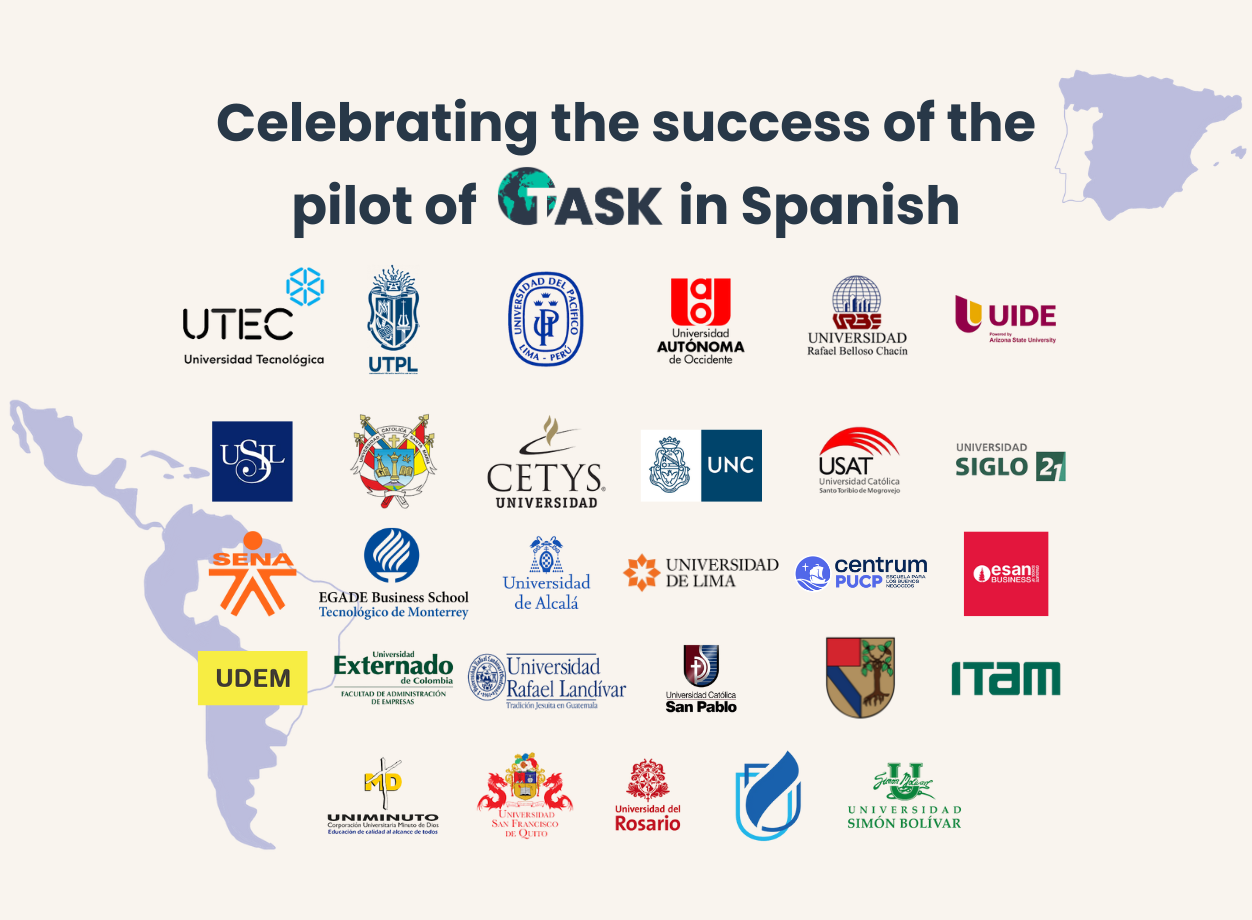
Best practices in assessment of and for learning: How TASK™ supports sustainability education

Assessment isn't just about measuring performance—it plays an essential role in teaching and learning (Levy-Feldman, 2025), and is a key driver of educational change. When used strategically, tools like TASK™ allow educators to understand what students know, identify gaps, and tailor instruction accordingly. For sustainability learning, this is especially critical: students must not only grasp complex interconnections but also internalize values that will drive lasting change.
TASK™—The Assessment of Sustainability Knowledge—serves as a unique and versatile tool for HEIs seeking to evaluate and strengthen sustainability literacy among their students. In our most recent report, Teaching the Change, we described the best practices for integrating TASK™ into the student’s journey, valuable insights shared below.
Entry and exit assessments
TASK™ is most powerful when deployed in two key stages: entry– as students begin their program of study)–and exit–as they graduate.
Entry assessment: Meeting students where they are
At the start of a program—or before students engage with sustainability-related content—TASK™ enables institutions to:
- Establish a baseline of student knowledge
- Identify knowledge gaps to guide curriculum planning
- Familiarize students with the platform for smoother future engagement
Early deployment allows educators to adapt learning pathways to both individual and cohort needs. This ensures students begin with a strong foundation and have sufficient "scaffolding”—which research shows is vital to transformative learning (Kirschner et al., 2016).
Using TASK™ results to inform the learning journey
Based on TASK™ assessment results, educators and institutions can:
- Recommend specific academic courses or extracurricular opportunities to students
- Adjust or enhance co-curricular activities such as conferences, events, or campaigns to address common gaps in knowledge
- Support faculty in refining their course content to address identified priority topics or underrepresented themes
- Use the TASK™ Navigational Charts to guide classroom discussions and curriculum mapping across the SDGs.
Exit assessment: Measuring growth and informing strategy
The exit assessment plays a critical role in evaluating institutional impact. By comparing TASK™ results before and after the program of study, institutions can:
- Identify which topics showed significant improvement
- Compare program or cohort performance to uncover trends
- Trace student progress back to specific activities, revealing potential “impact hotspots”
This insight not only improves curriculum design but also informs strategic planning and institutional development.

Going further: Embedding reflection and action
TASK™ is more than an assessment—it sets a foundation for a systemic understanding of and engagement with sustainability . Research shows that reflective learning consolidates knowledge and personal relevance, which supports long-term transformation (Blair, 2024; Fullana et al., 2014; Chang, 2019). Learning, after all, is shaped not just by instructional or pedagogical intentions, but by the actions and engagement of the students themselves (Goodyear et al, 2021, as cited in Fischer et al, 2023).
Suggested practices after assessment
To enhance learning, institutions are encouraged to incorporate:
- Reflective journals or essays exploring personal insights and sustainability goals
- Goal-setting exercises to plan continuous learning
- Workshops or discussions based on assessment outcomes
- Peer learning activities, such as presentations on areas needing improvement (Read the case study of ESCP as an example)
These methods foster active engagement, critical thinking, and collaborative learning—core components of transformative education.
One tool, many contexts: Adapting to institutional needs
There’s no universal formula for implementing TASK™. Variables such as student maturity, institutional culture, and existing sustainability efforts all influence how the tool is deployed.
However, our experience is that TASK™ works best when:
- Students see it as a learning opportunity, not just an evaluation
- Educators use the data to improve both curriculum and extracurricular activities
- Assessments are followed by reflection and action to promote deep understanding
TASK™ as a catalyst for change
Ultimately, TASK™ goes beyond measurement. It offers a shared language around sustainability, enhances institutional coherence, and empowers students to take ownership of their learning.
When thoughtfully integrated, TASK™ becomes a powerful catalyst—helping institutions fulfil their mission of preparing the next generation of ethical, informed, and capable sustainability leaders.
Ready to strengthen sustainability teaching and learning at your institution? Contact our team.












